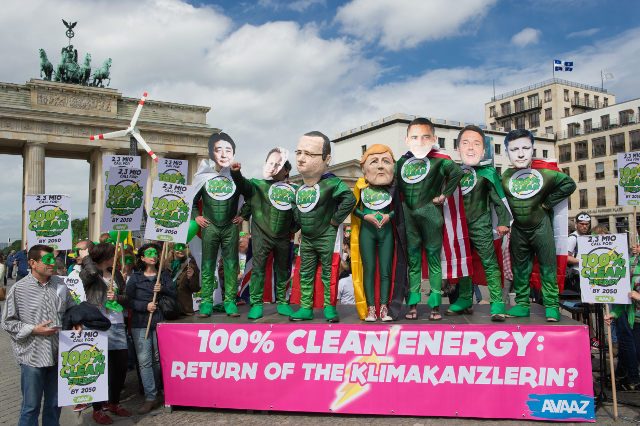SUMMARY
This is AI generated summarization, which may have errors. For context, always refer to the full article.

PARIS, France –Negotiators are gearing for twin meetings next week that may determine whether the vaunted 2015 Paris climate accord will be a big bang or a fizzle.
A 10-day conference under the UN flag starts in Bonn on Monday, June 1, followed by the Group of Seven (G7) summit in Bavaria on June 7 and 8.
The two gatherings come at the crucial halfway point in the year’s crowded climate agenda.
Everything is supposed to culminate in Paris on December 11 with a pact committing 195 countries to roll back greenhouse gases and help poor people exposed to climate change.
But getting from here to there remains a mighty challenge, say observers.
“It’s a little like the moment of truth,” said French negotiator Laurence Tubiana.
In Bonn, the big task will be to take a knife to the draft text.
Desperate to avoid a blowup in this combustible process, the chairmen have solicited national viewpoints and stuffed them all into the document.
The bloated 80-page text will have to be trimmed into a manageable script for a post-2020 deal, and cosy consensus will be the victim.
“People are now going to have negotiate, and things will get tense,” Tubiana told journalists on Thursday.
What is not disputed in the draft is the figure of two degrees Celsius (2C) — the maximum warming that should be allowed since pre-industrial times, before the era when coal, gas and oil began to be burned in vast quantities.
“For us, anything above two degrees is a death warrant,” Tony de Brum, foreign minister of the Marshall Islands, warned last week.
“It is the end of our culture, our tradition, our language, our people,” he said. “We must hold the world to that promise.”
But precisely how should the world get to 2C?
Contrasting ideas include an overall target for global carbon emissions, or zero emissions by 2100, or for emissions to peak “as soon as possible” or a pathway towards 2050.
Crank up action
Another question mark in Bonn hangs over a so-called ratchet mechanism.
Simply put, stated and likely carbon-cutting pledges in Paris will not by themselves get Earth close to the coveted 2 C target.
On current trends, according to the UN’s Intergovernmental Panel on Climate Change (IPCC), the global mean temperature could rise by up to 4.8 C this century alone, a recipe for worse drought, flood and rising seas.
What is needed is a mechanism by which countries agree to meet regularly beyond 2015 and strengthen – ratchet up – pledges so that the planet is aligned with a 2 C trajectory.
But when countries should meet, what the reviews should cover and whether they should be formally linked to a long-term goal have to be hammered out.
The ratchet mechanism is “the area that certainly needs the most work” in Bonn, said Liz Gallagher of campaign group E3G.
“We (have to) get the right architecture and the right regime so that we get this very durable, consistent, regular way of coming back to the negotiations and keeping on track to two degrees.”
As the wrangle unfolds in Bonn, many delegates will cast a worried eye at what happens 450 kilometers (280 miles) to their southeast.
The G7 summit offers a stage for Japan – now the laggard among the richest economies – to spell out its plans for national curbs in carbon emissions.
Voluntary pledges are intended to be the beating heart of the Paris agreement.
But so far only 38 parties, amounting to just a third of global emissions, have made their submissions, according to the UN Framework Convention on Climate Change (UNFCCC) website.
Pledgers include the United States, the European Union, Russia and Canada, but not yet Japan, nor Australia, Brazil, India or China, the world’s No. 1 emitter.
Developing countries, meanwhile, see the G7 as a test of how rich economies will flesh out their promise of mustering $100 billion (92 billion euros) a year in climate finance by 2020.
“The problem is the ambiguity of this undertaking,” said Tubiana.
“What is climate finance? How much of this will come from existing public funds? And how to do you count the private component?” – Richard Ingham, AFP/Rappler.com
Add a comment
How does this make you feel?





There are no comments yet. Add your comment to start the conversation.